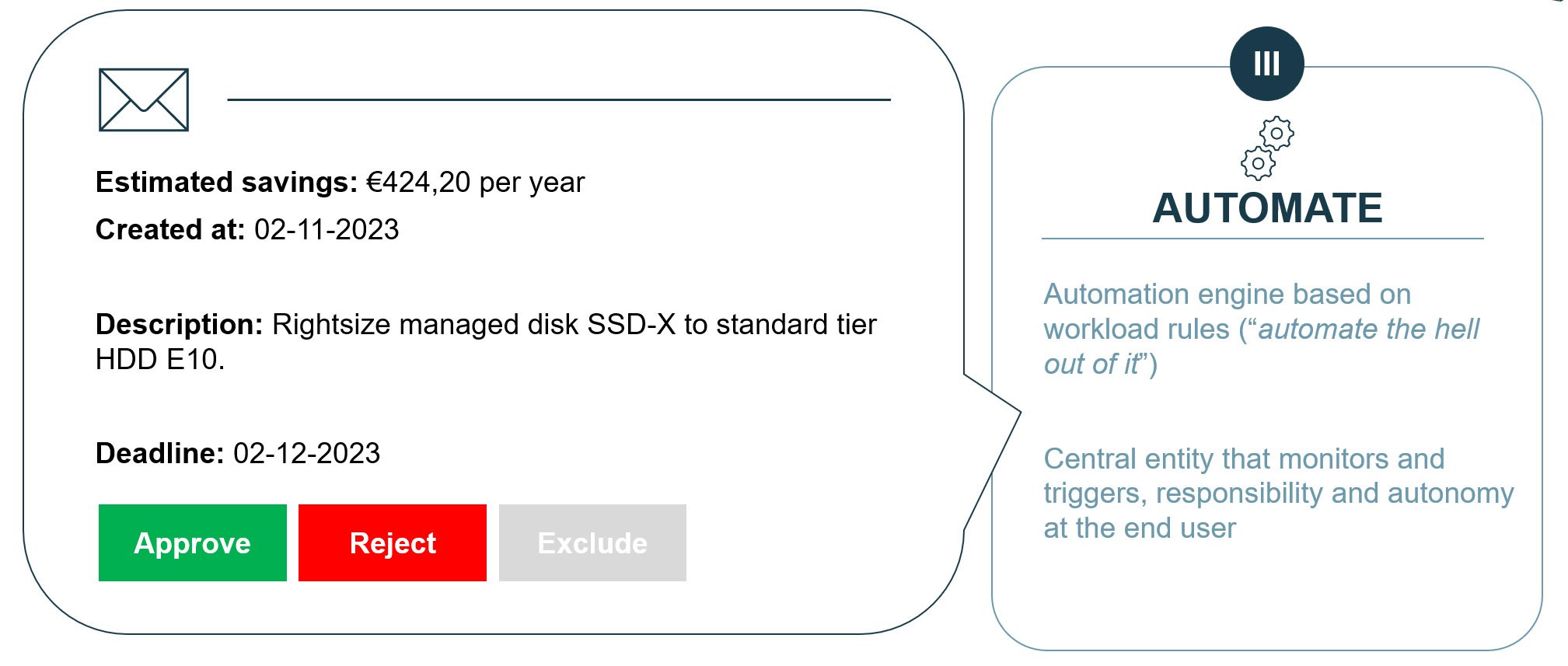Cloud cost control: Stay in control of your cloud costs
What we see at many companies is that total IT costs have increased since working with the cloud. So why did we move to the cloud in the first place? And how to reduce and control these cloud costs?
There are many reasons why cloud is a good place to be. Let’s sum op why we moved to there in the first place:
- Speed up – no HW ordering, increase SW development speed
- Flexibility – up and down scaling when needed / when possible
- Management – no more need to physically manage datacenter space, facilities, and hardware
- Expenses – less CAPEX, only OPEX
- Costs – cheaper than on-prem
But in the end, was it cheaper? Not if we use it the way most companies do: inefficiently. Cloud has many benefits, but costs will rapidly increase if we don’t adapt our way of working to it. Staying in control of the costs requires hard work, the right tools, and the right knowledge.
If we talk about cloud cost control, people tend to start naming buzzwords as ‘Cloud Unit Economics’, ‘Operationalizing your FinOps strategy with AI’, or ‘Embracing Augmented FinOps’. At Itility, we like to keep it simple and pragmatic. So based on experience and best practices, we have defined three main topics to stay in control of cloud costs. With these topics in place, we’re confident that any company can reduce up to 60% of the cloud costs.

1: Analyze
It all starts with insights. Without insights, you are blind. Whether you use an off-the-shelve tool or build your own dashboards, this is a must have. Think of historical insights, forecasts, and real-time usage and costs reports.
Overall, this first topic is mainly bringing awareness. In itself, insights do not directly result in significant cost savings. For the real savings, we’ll have to undertake action.
2: Act
Use your insights, get to work, act. This second topic is a broad one that can result in large savings. We like to divide this second topic into two categories: acting horizontally on cloud account and acting vertically inside the workloads.
Acting horizontally on your cloud account, when combined with the right insights, can lead to 15-20% cost savings. Think of diving into reservations, licenses, and negotiations with your hyperscaler for discount.
On top of the onetime savings that can be achieved by acting horizontally, acting vertically inside the workloads can save you even more. Think of rightsizing your applications, lifecycle management, spot pricing, planning, orphans, etc. Acting inside the workloads does bring risks and is a complex process. Making a mistake might break the application or make you violate terms and conditions.
The only way to effectively and efficiently act within the workloads, is by applying the short cycle approach: get people with cloud cost knowledge into the workload, working shoulder-to-shoulder with the workload’s key users. Together, discuss optimizations, verify and test on impact, implement changes, and keep repeating this process until the ROI becomes uninteresting. It’s hard work, but rewarding. And what we often see is that it creates a snowball effect, since the users will take similar actions on multiple applications.
If you are in for the long run with certain public cloud applications, you need to take it one level further: truly optimize for cloud by finding the most optimal architecture. Both are optimized from a functional and cost perspective. Think of topics such as Cloud native development, PaaS and SaaS on cloud, micro services architecture, serverless.
So, by creating insights and acting upon these insights, we will be able to get in control. But if we stop giving it attention, costs will gradually increase again. And you don’t want to have your teams continuously investing a lot of effort in cloud costs savings. When you are in control, make sure you stay in control by applying automation.

3: Automate
The final step, to preserve the value you’ve created by analyzing and acting, is to automate. When you assess potential savings, these are onetime changes. Key is to, in parallel, define rules or policies to ensure that costs will not get out of control again. Embed those rules or policies in an automation engine and let that engine monitor, trigger, and email application owners. Make sure that those mails show possible cost savings (and potentially also “tree saving” showing the CO2 one can save by downsizing or deleting), and allow to accept or reject a proposed change with the push of a button. And then let the engine implement it automatically or schedule the change.

Let the savings begin
So, with these three steps (analyze, act, and automate) we can reduce a typical cloud spend with 10 to even 50%. It’s nothing new, but it requires work, and it takes time.
The good thing is: you wíll save cost. And, when acting in the horizontal cost saving area of downsizing and orphaning, you could potentially also save quite some trees. Since every running workload that you diminish, halt or completely delete will save energy in the cloud data center.






